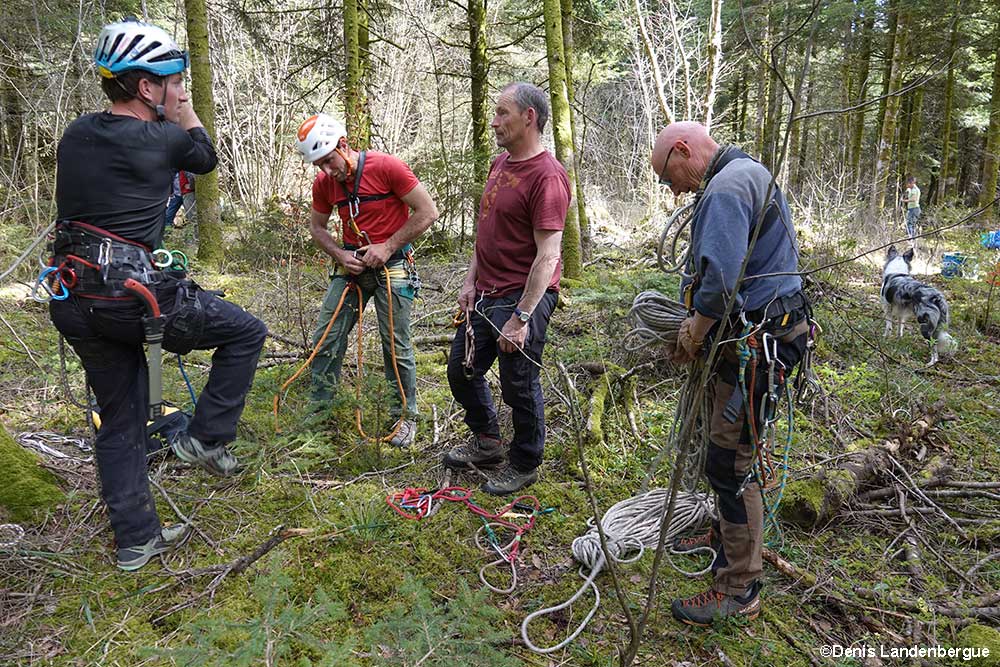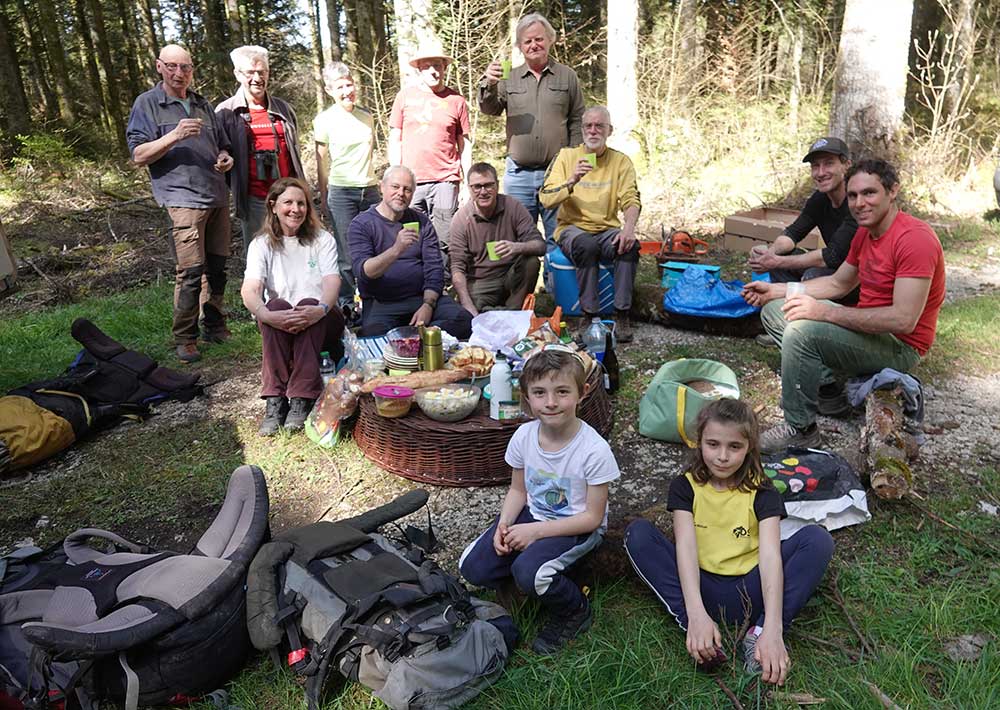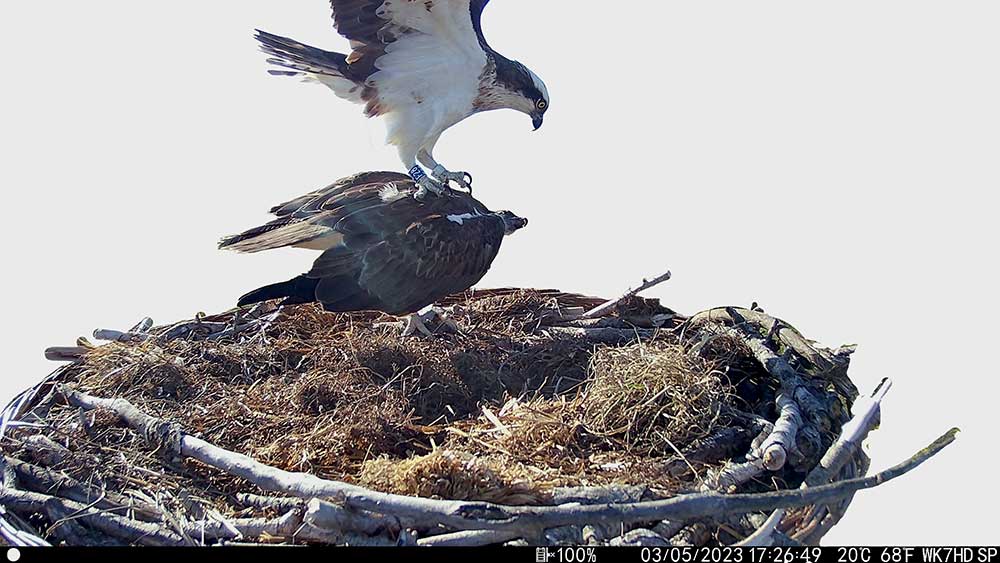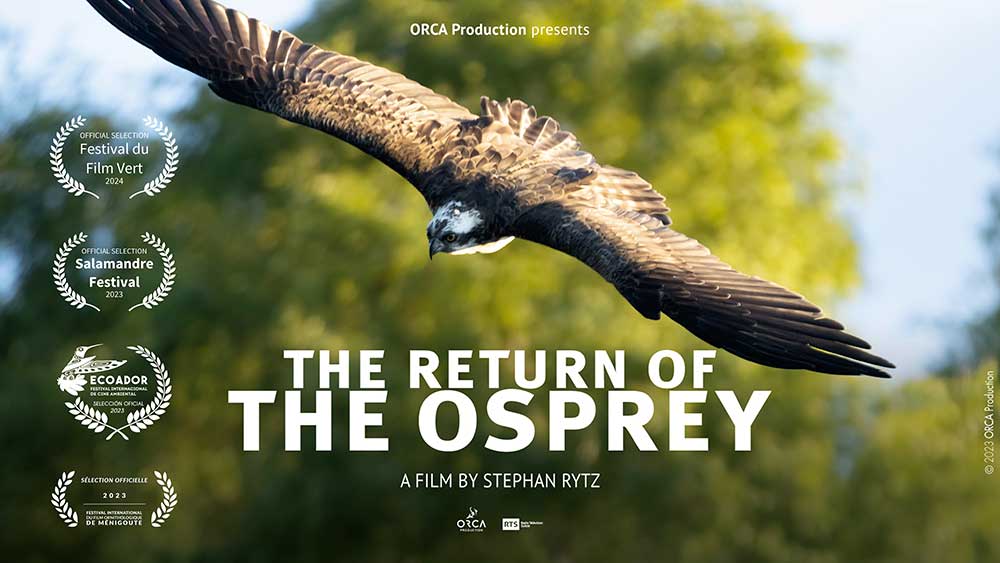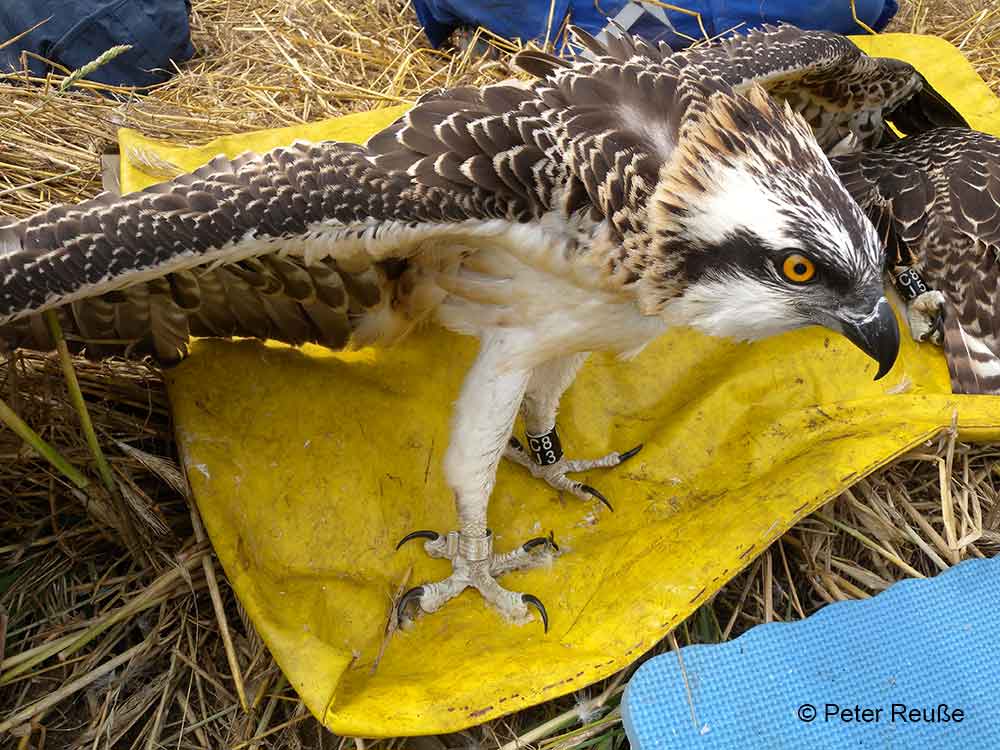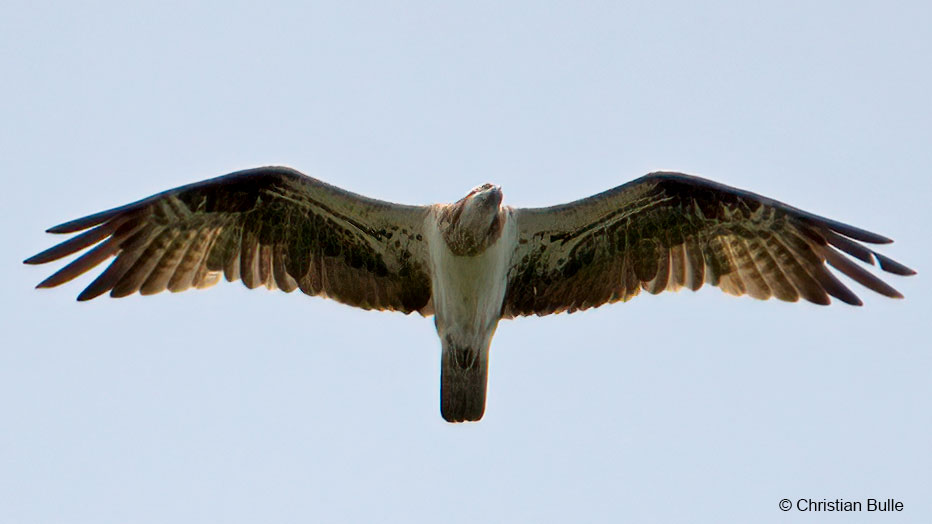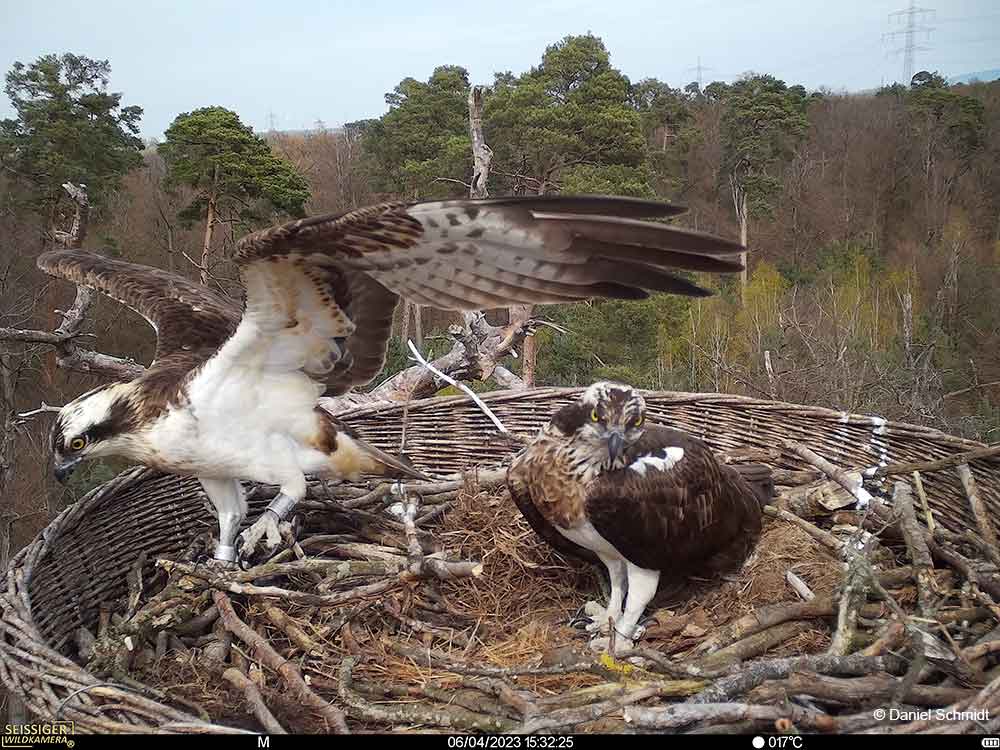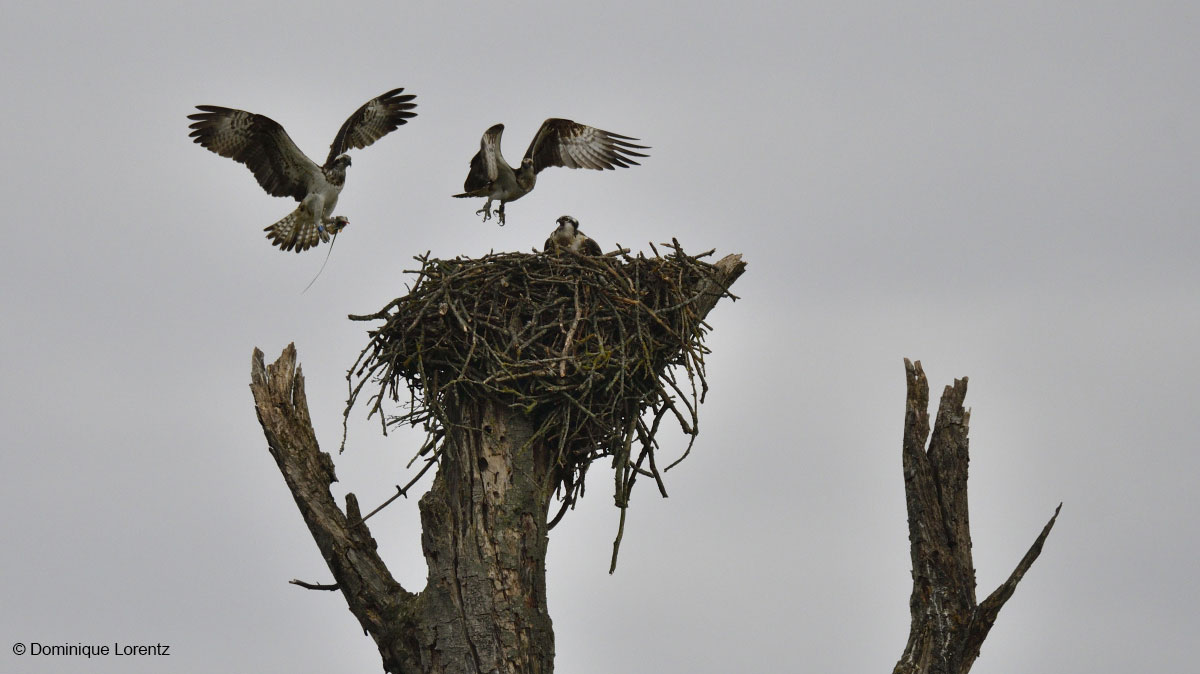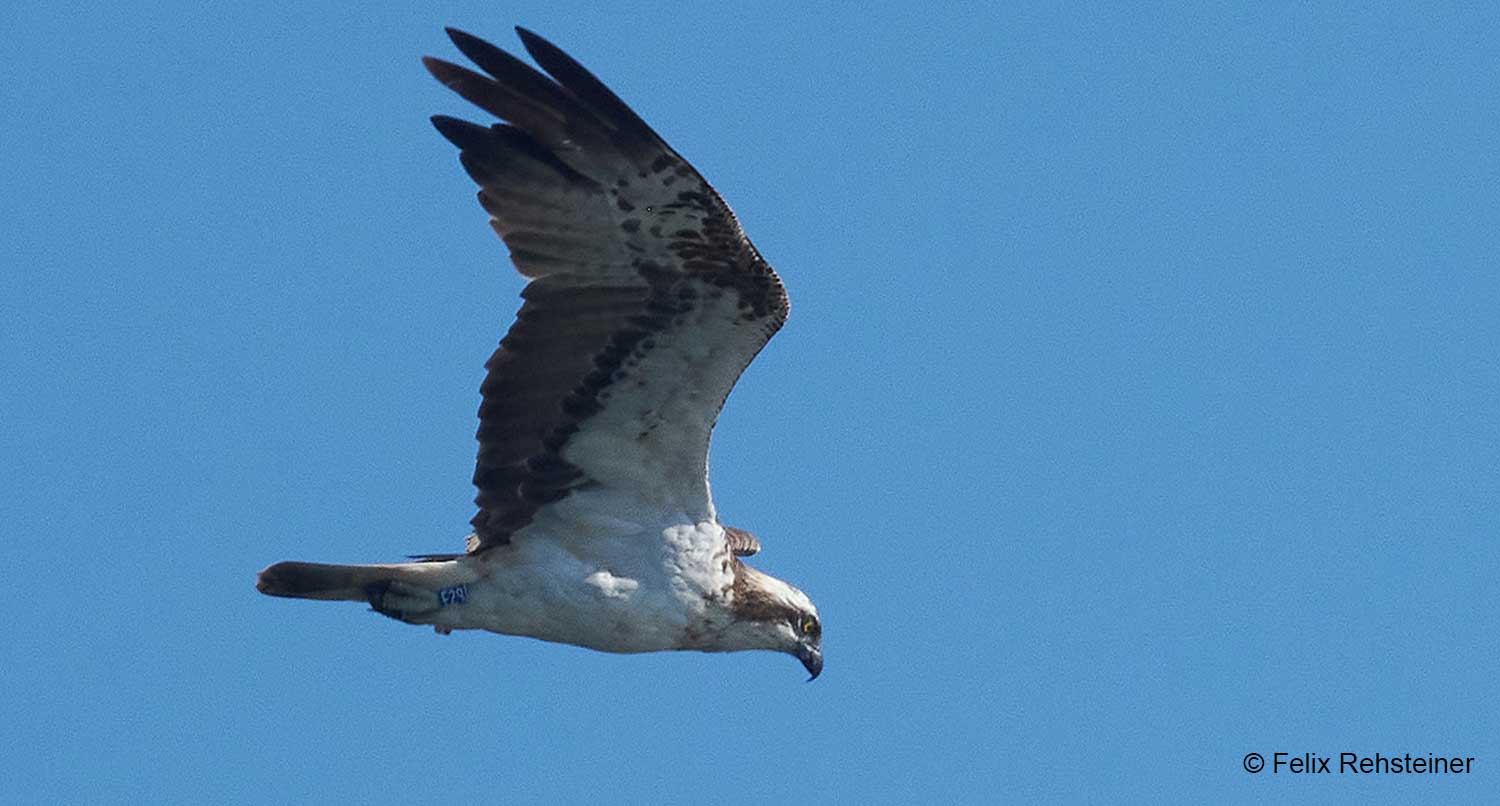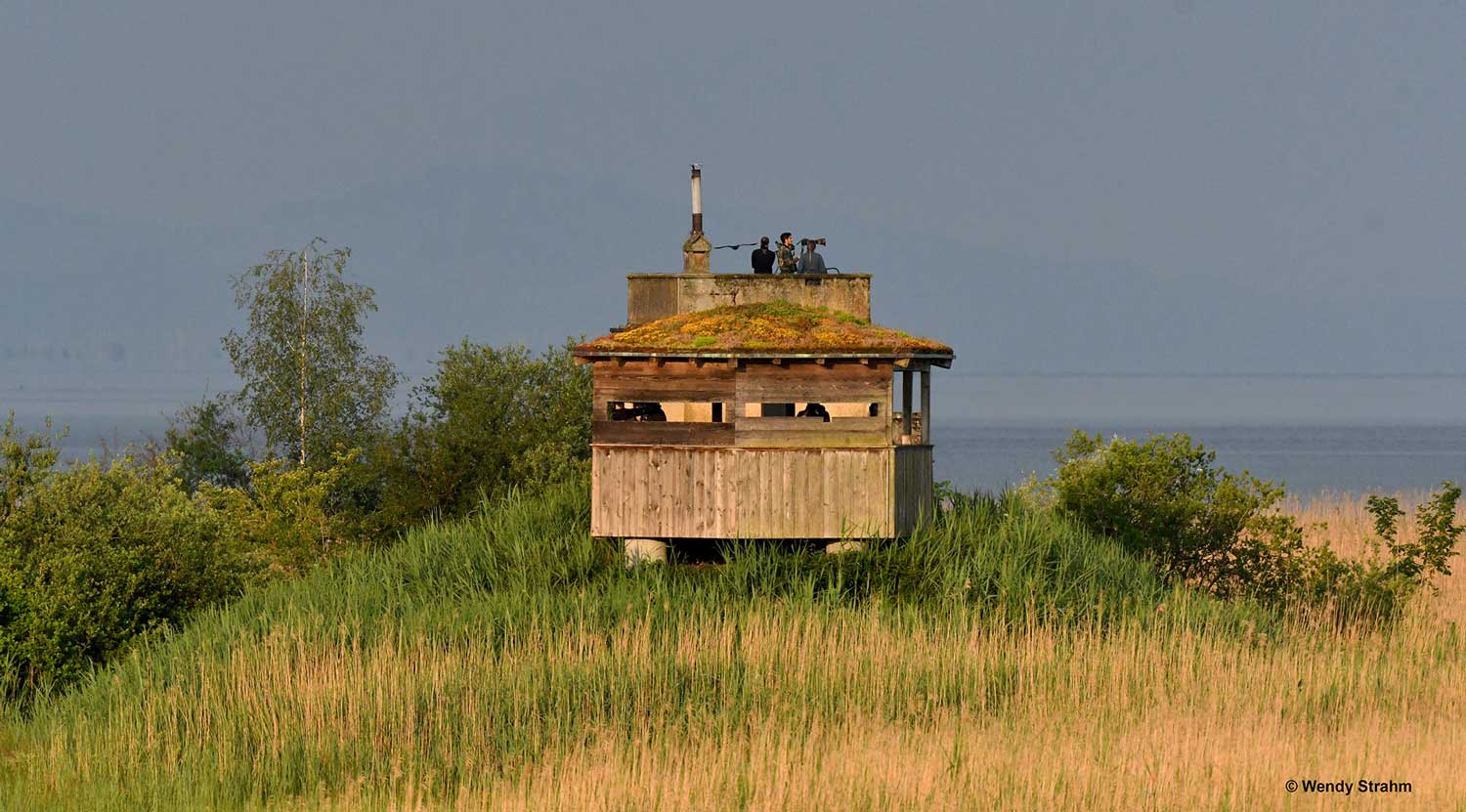Two new platforms have been built in the Drugeon River basin, on the French side of the border in the Department of the Doubs. Even if the ultimate goal of the Nos Oiseaux project is to have Osprey breeding again in Switzerland, these birds know no borders (as demonstrated by our two females Mouche and Chronos). Last summer two Osprey were observed in the Drugeon River basin: one male, very likely Flamme, and an unringed female. This is why we have just built two new platforms there, at the top of some beautiful Silver Firs (Abies alba). Christian and Pascal Grand, experienced climbers and nest builders, came along to help on a glorious and unseasonably warm day.
Our great thanks go to them, who trained local climbers Nicolas Salvi and Quentin Schlisteur in the art of Osprey platform-building (photo above). All did a wonderful job, volunteering as always their time and expertise. It certainly helps that both Christian and Nicolas have their own carpentry business, so don’t hesitate to contact them should you need work done around Fribourg in Switzerland or Pontarlier in France. Thanks also to the ground crew that included Laurent Beschet, Christian Bulle, Christian Grand (frustrated that he couldn’t climb as he’s still recovering from an accident), Valérie Grand, Denis Landenbergue, Dominique Michelat, Didier Pépin and Wendy Strahm – not to forget all their contributions to a memorable picnic lunch.

